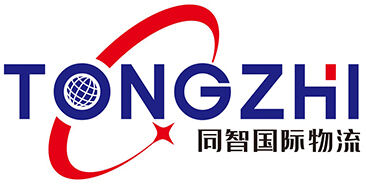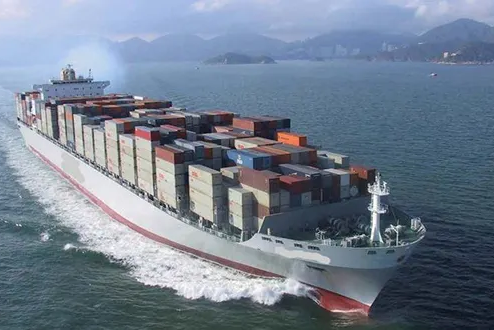Containertransport er ryggraden i global handel, og gjør det mulig å flytte varer effektivt og sikkert over hele verden. Med den stadig voksende etterspørselen på internasjonal handel, må bedrifter forstå detaljene i containertransport for å optimere deres logistiske operasjoner. Denne artikkelen utforsker beste praksis og viktigste overveielser for å maksimere effektivitet i containertransport.
Forstå Containertransport
Containertransport involverer å transportere varer i store, standardiserte containere. Disse containere kommer i ulike størrelser, med de mest vanlige å være 20-fot og 40-fot containere. Standardiseringen tillater en smidig overføring mellom skip, lastebiler og tog, noe som gjør det til et versatilt og effektivt transportmiddel.
Hovedfordeler ved containertransport
Effektivitet: Containere er designet for enkel håndtering og staking, noe som akselererer inn- og utlastingsprosessen på havnene. Denne effektiviteten oversetter seg til kortere reisetider og reduserte kostnader.
Sikkerhet: Varer transportert i containere er mindre utsatt for skade og tyveri. Den robuste konstruksjonen av containere gir fremragende beskyttelse mot elementene og potensiell tyveri.
Kostnadseffektivitet: Containertransport er generelt mer kostnadseffektiv enn andre transportformer, spesielt for internasjonale langdistansefrakt. Evnen til å konsolidere flere frakter i én container reduserer ytterligere kostnadene.
Fleksibilitet: Beholdere kan bære en bred vifte av varer, fra råmaterialer og maskiner til lettelige varer og ferdige produkter. Specialiserte beholdere, som kjølevanter (reefers), tilpasses spesifikke behov som temperaturregulering.
Beste praksis for containerfrakt
Velg riktig containertype
Å velge den riktige containertypen er avgjørende for å sikre trygg og effektiv transport av varer. Standardtørre beholdere passer for de fleste typer last, men bedrifter bør overveie specialiserte beholdere for spesifikke behov:
Kjølevanter (Reefers): For lettelige varer som krever temperaturregulering.
Åpne topp-beholdere: For overspillslast som ikke passer inn i en standardcontainer.
Flathylle-containere: For tunge og voluminøse varer som maskiner og kjøretøy.
Optimer containerbruk
Å maksimere bruk av tilgjengelig plass innenfor en container kan redusere fraktkostnadene betydelig. Bedrifter bør:
Pakke og stakk varer riktig: Forsikre at varer er pakket tett og sikkert for å forhindre at de flytter seg under transport.
Bruk paletter og kjører: Gjør det enklere å håndtere varer og bruk rom effektivt.
Balanser vektdeling: Fordel vekten jevnt for å opprettholde stabilitet og forhindre skader.
Innfrøs avanserte sporingsystemer
Sporing i sanntid og overvåking av leveranser gir verdifulle innsikter og forbedrer synlighet gjennom hele fraktfasen. Avanserte sporingsystemer tilbyr:
Oppdateringer av plassering i sanntid: Hold bedrifter informert om plasseringen og statusen på deres leveranser.
Tilstandsovervåking: Forsikre at temperatursensitive varer forblir innenfor den nødvendige grensen.
Prediktiv analyse: Forutsi potensielle forsinkelser og optimaliser ruter for hurtigere leveranse.
Forsikre overholdelse av forskrifter
Overholdelse av internasjonale fraktforskrifter er avgjørende for å unngå forsinkelser og boter. Bedrifter bør:
Hold deg oppdatert om handelsregler: Hold deg på kurs med import-/eksportlover og tollkrav for hver destinasjon.
Forbered nøyaktige dokumenter: Forsikre deg om at alle nødvendige dokumenter, som fraktforsendelser, opprinningssertifikater og tollerklæringer, er korrekt utfylt og levert innen tiden.
Arbeid med erfarna tollmenn: Få gjennomført tollprosessen smertefritt og minimer risiko for samsvarproblemer.
Bruk teknologi for økt effektivitet
Teknologi spiller en avgjørende rolle i å optimere containerskipshandlinger. Bedrifter bør adoptere:
Fraktstyringssystemer: Forenkle bestilling, dokumentasjon og sporingsprosesser.
Automatiserte lastehandlingssystemer: Forhast laste- og avlasteoperasjoner ved havneanlegg.
Blockchain-teknologi: Forbedre gjenstandighet og sikkerhet i forsyningskjeden ved å tilby en endelig registrering av transaksjoner og bevegelser.
Nøkkelkon sider for containerskipning
Kostnadshåndtering
Fraktkostnader kan påvirke et bedrifts resultat betydelig. Nøkkelstrategier for å administrere kostnadene inkluderer:
Sammenslåing av leveranser: Kombiner flere leveranser i én container for å nytte av skala fordeler.
Forhandlinger av kontrakter: Sikr deg gunstige priser og vilkår med fraktlinjer og godsforrettere.
Optimalisering av ruter: Velg de mest effektive og kostnadsfaglige rutene for å minimere transporttider og redusere brændselforbruk.
Risikostyring
Å håndtere risikoer knyttet til containert frakt er avgjørende for å sikre trygg og pünktsam leveranse av varer. Overvei følgende:
Forsikringstildekning: Beskytt mot potensielle
tap på grunn av skade, tyveri eller forsinkelser.
Kontinansplanlegging: Utvikl planer for å håndtere uventede avbrytelser, som havnestreik eller naturkatastrofer.
Regelmessige revisjoner: Utfør revisjoner av fraktprosesser og partnere for å identifisere og redusere risikoer.
Bærekraftige praksiser
Bærekraftighet blir stadig viktigere innen global logistikk. Bedrifter kan innføre miljøvennlige praksiser som:
Bruk av bråneffektive skip: Velg skipsruter som bruker moderne, bråneffektive skip for å redusere karbonutslipp.
Implementering av grønne pakkingløsninger: Bruk gjenbrukbare og biodegradable pakkingmaterialer for å minimere miljøpåvirkning.
Utjevning av karbonutslipp: Delta i karbonutjevningsprogrammer for å neutralisere miljøfotavtrykket fra skipsaktiviteter.
Konklusjon
Containertransport er et viktig element i den internasjonale handelen, og tilbyr effektivitet, sikkerhet og kostnadseffektivitet. Ved å implementere beste praksiser, som å velge riktig containertype, optimere containerbruk, utnytte avanserte sporingssystemer, sørge for regulativt oppfyllelse og ta i bruk teknologi, kan bedrifter maksimere fordelsene med containertransport. I tillegg er kostnadsstyring, risikoredusering og innføring av bærekraftige praksiser avgjørende for å opprettholde konkurransedyktighet på den globale markedet.







































